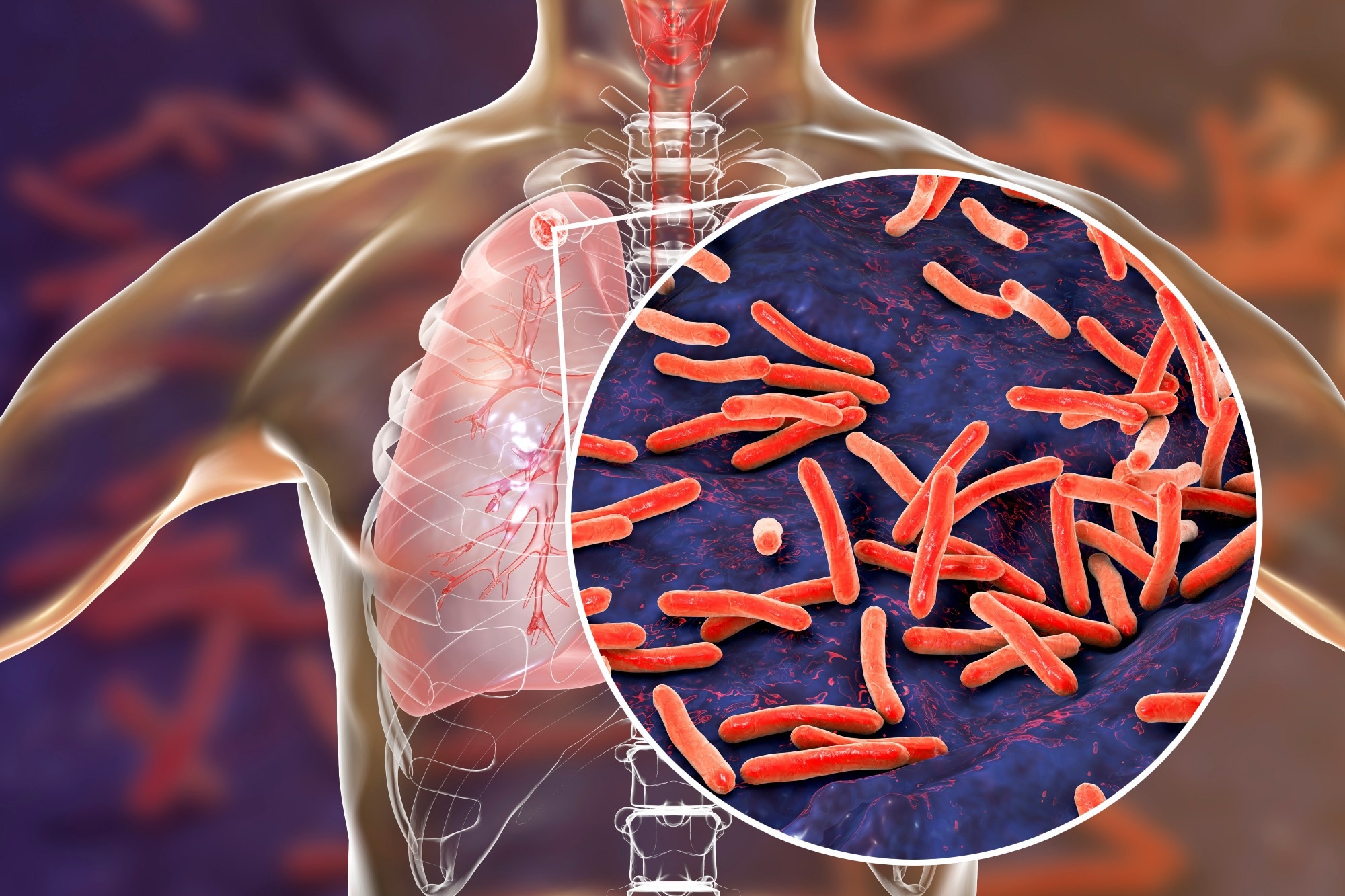
[ad_1]
In a current article revealed in Scientific Studies, researchers utilized Gaussian Combination mannequin (GMM) statistical approaches to find out the drug-resistant genotypes in combined pressure an infection (MSI) samples of Mycobacterium tuberculosis with complete genome sequencing (WGS) knowledge.
The research knowledge might support prognosis and drug resistance (DR) mapping of tuberculosis (TB) sufferers for an infection management.
 Examine: Blended infections in genotypic drug-resistant Mycobacterium tuberculosis. Picture Credit score: Kateryna Kon/Shutterstock.com
Examine: Blended infections in genotypic drug-resistant Mycobacterium tuberculosis. Picture Credit score: Kateryna Kon/Shutterstock.com
Background
M. tuberculosis, the causal agent of TB, has 4 lineages (L1-L4), every having a number of strains with various transmissibility and disease-causing potential.
Scientific research have reported that some TB sufferers harbor a number of M. tuberculosis strains, leading to within-host MSIs.
The presence of drug-susceptible and drug-resistant strains throughout the similar host contributes to multi-drug resistance (MDR-TB), which hinders an infection management by first-line TB therapy, rifampicin (RR-TB) and isoniazid (HR-TB) and in addition contribute to the unfold of drug-resistant strains.
But research have barely recognized drug-resistant strains inside MSI samples of M. tuberculosis.
Concerning the research
The current research analyzed 50,723 M. tuberculosis isolates the place WGS and drug susceptibility check (DST) knowledge have been publicly obtainable.
These samples, collected from 64 nations, exhibited ≥99% genome-wide protection and sequencing learn depths of 30-fold or greater. Furthermore, these samples encompassed all main M. tuberculosis lineages, with respective proportions of L1, L2, L3, and L4 being 9.1%, 27.6%, 11.8%, and 48.3%.
The TB-Profiler software program initially detected MSIs and inferred genotypic drug resistance in these samples, together with the supported learn protection of sub-lineages inside every pattern.
Notably, it used completely different informative mutation lists for genotypic profiling. Subsequent, the researchers constructed a GMM for every pattern and assessed its efficiency. GMM helped detect combined gene reads and MSIs throughout all M. tuberculosis sub-lineages.
Efficiency measures included the imply sq. error (MSE) and the accuracy of the drug resistance profiling in comparison with TB-Profiler predictions.
As well as, they used WGS knowledge from 48 samples from scientific Malawi M. tuberculosis strains to judge GSS efficiency on synthetic mixes of bacterial deoxyribonucleic acid (DNA) samples.
Outcomes
The outcomes confirmed that M. tuberculosis lineage 2.2.1 was probably the most prevalent in 4, Southeast Asia, the Western Pacific, Africa, and Europe of six World Well being Group (WHO) areas evaluated.
TB-Profiler software program predicted a major proportion of M. tuberculosis isolates have been immune to isoniazid and rifampicin; accordingly, these have been MDR-TB. As well as, genotypic resistance predictions have been constant usually.
Additional, the researchers famous that the L4 pressure and L4.3.3 sublineage have been probably the most prevalent globally. Genotypic drug resistance was the very best within the Jap Mediterranean area, predominantly because of L3 strains.
M. tuberculosis MSIs are informative for heteroresistance, which may mitigate the effectiveness of TB therapy. TB-Profiler software program predicted MSIs in 531/48,679 samples, i.e., in 1% samples. Quant-TB software program confirmed most MSIs recognized by TB-Profiler.
Whereas Lineage 4 M. tuberculosis strains have been probably the most concerned in MSIs, La1.1, L2.2, and M. caprae confirmed some involvement, too. Together, L4 and L2 induced MSIs, reflecting the confounding results of the sampling.
Moreover, the GMM strategy revealed decreased involvement of the much less transmissive lineages, e.g., M. tuberculosis lineage 7, doubtless as a result of their sequencing charges are comparatively low.
GMM fashions and TB-Profiler attained low MSEs in samples with a dominant pressure, indicating good predictive energy.
Their efficiency was good for the reason that total MSE values have been constantly low for each strategies. Notably, Quant-TB attained the next total MSE worth than the opposite strategies.
Conclusions
M. tuberculosis tradition & colony sampling methods and bioinformatic analyses (used earlier) underestimated the diploma of MSIs in M. tuberculosis samples.
Quite the opposite, direct WGS of sputum or lung tissue introduced a greater and extra correct illustration of M. tuberculosis range inside a TB affected person. These strategies have additionally proven that TB infections are far more advanced than beforehand thought.
Within the present research, combining WGS knowledge with the GMM strategy, a non-culture-based methodology for drug resistance profiling successfully predicted the relative abundance of various strains in DNA samples with identified DR and mixing proportions.
GMM fashions predicted extremely correct drug resistance throughout the minor mixing proportions, i.e., these between 0.05 and 0.50, with an total MSE of 0.012. Quite the opposite, MSE values for TB-Profiler and Quant-TB have been slightly decrease (0.009) and larger (0.013).
General, GMM knowledge could possibly be insightful for scientific decision-making in TB instances, support prognosis, and optimize the personalization of therapies. Most significantly, WGS-based diagnoses for TB might assist keep away from ineffective drug(s) use.
Additional enhancements to the GMM strategy by using M. tuberculosis phylogenetic tree construction might even prolong the advantages of this strategy to different MTBC members, resembling M. bovis, and M.caprae, to call just a few.
[ad_2]